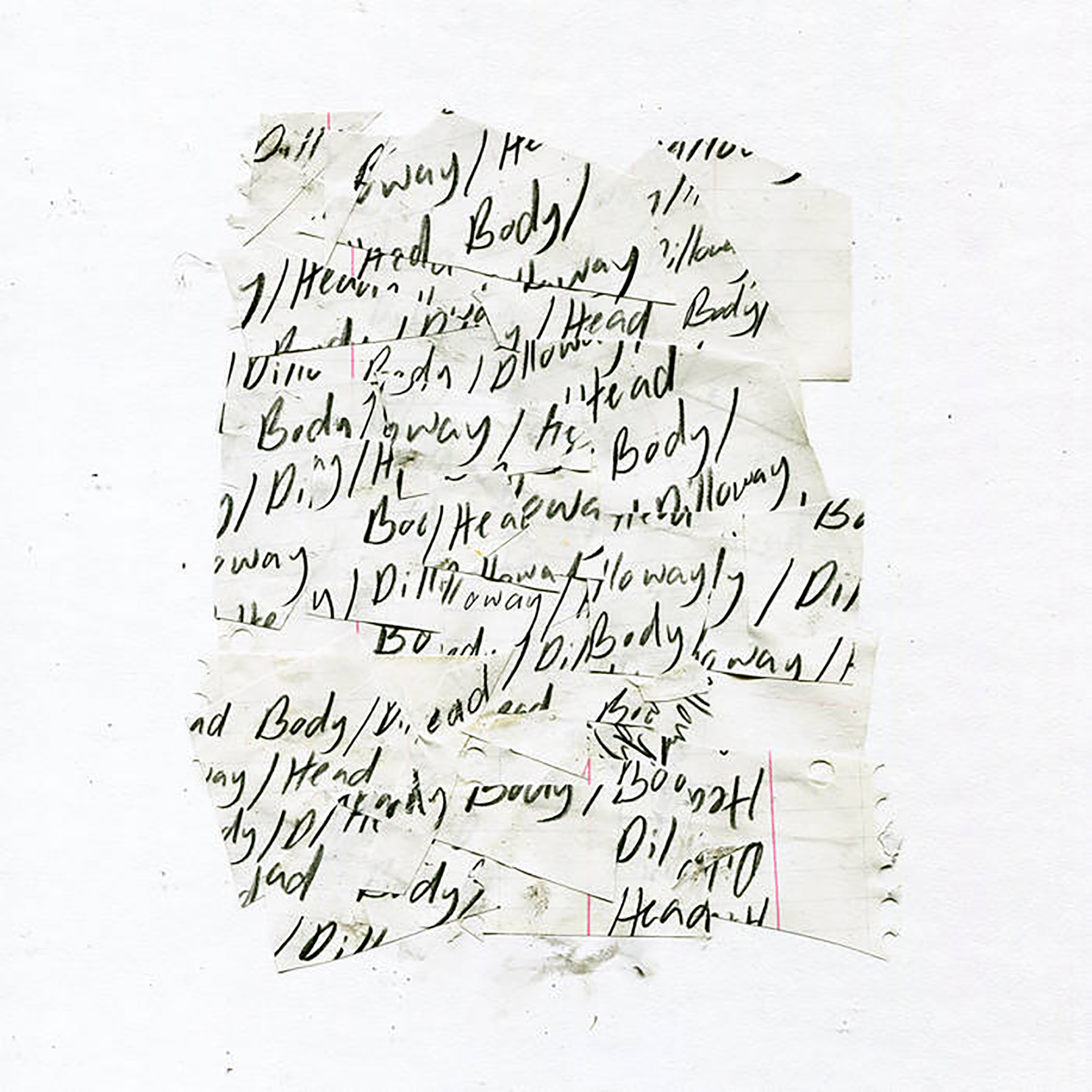 Past experience has taught me not to get too excited about promising-sounding collaborations between great artists, but the allure of this particular project was admittedly damn hard to resist: Body/Head is consistently the most provocative and intense of Sonic Youth's descendants and Aaron Dilloway seems absolutely incapable of releasing a disappointing album these days. Still, there is never any way to predict which threads will assert their dominance when distinctive visions collide, so there are a number of possible shapes that this album could have taken. To my ears, it is Dilloway's broken, murky, and obsessively looping aesthetic that mostly steers the ship, but the balance between the three artists is sufficiently unpredictable and shifting to make this trio feel like something quite different from either Dilloway's solo work or past Body/Head releases. Matt Krefting already did a fine job of summarizing the trio's shared vision with "over and over one gets the sense that the music is trying to wake itself from a dream," but it is also more than that, as this trio have a real knack for slowly transforming gnarled and challenging introductory themes into unexpected passages of sublime beauty.
Past experience has taught me not to get too excited about promising-sounding collaborations between great artists, but the allure of this particular project was admittedly damn hard to resist: Body/Head is consistently the most provocative and intense of Sonic Youth's descendants and Aaron Dilloway seems absolutely incapable of releasing a disappointing album these days. Still, there is never any way to predict which threads will assert their dominance when distinctive visions collide, so there are a number of possible shapes that this album could have taken. To my ears, it is Dilloway's broken, murky, and obsessively looping aesthetic that mostly steers the ship, but the balance between the three artists is sufficiently unpredictable and shifting to make this trio feel like something quite different from either Dilloway's solo work or past Body/Head releases. Matt Krefting already did a fine job of summarizing the trio's shared vision with "over and over one gets the sense that the music is trying to wake itself from a dream," but it is also more than that, as this trio have a real knack for slowly transforming gnarled and challenging introductory themes into unexpected passages of sublime beauty.
The album is comprised of two longform pieces separated by a shorter piece ("Goin' Down") and each one feels like a different direction or even an entirely different band. In fact, the album art does a remarkably great job at conveying what the music is like: a handful of recognizable elements chopped up and re-assembled into a nearly unrecognizable abstraction. The opening "Body/Erase" is the most "Dilloway" of the three songs, as it features a long, slow fade in of subtly oscillating drone and warped tape warbles that feel like an unsettling dream where conversations are slowed and smeared into something inscrutable and vaguely sinister. Gradually, the gnarled tape loop fragment become more frequent and violent, blossoming into a jabbering, splattering phantasmagoria that starts to become even more unhinged shortly after the nine-minute mark with the appearance of an ugly repeating buzz and an insistent pedal tone from Nace's guitar. Once all the elements are in place, "Body/Erase" becomes a massive, seething juggernaut of layered cacophony.
In the wake of that slow-burning tour de force, some more recognizable and expected elements surface with "Goin' Down," which initially sounds like a classic Sonic Youth single that has been stretched and deconstructed into abstraction. I dig the repeating howl of warbling guitar noise, but the real payoff is the squelching, wobbly, and ruined reverie of the final minute. The album then ends with its wildest, most go-for-broke piece, as the shapeshifting 13-minute epic "Secret Cuts" alternately sounds like the slow boinging of a massive cosmic spring, a noise guitar show frozen in looping suspended animation, and the hushed voice of an angel speaking from inside my head ("do you want?" is the only phrase that I can reliably make out). Some of the transitions between segments can be a little jarring (purposely, I presume), but all of the segments themselves are compelling and lead to a lovely set piece of warm, swelling drones and flickering voice fragments. It is damn lovely while it lasts, but an earlier noise guitar motif unexpectedly claws its way back from the grave to end the piece on an ugly, gnarled note. I cannot say that I am particularly surprised that Nace and Gordon were so game to let Dilloway drag their vision through a meat grinder or that the end result was so good, yet I was legitimately caught off guard by the ephemeral oases of beauty that occasionally surface. While this can admittedly be a prickly, difficult, and potentially room-clearing album at times, it is also a singular and unusually memorable release for all involved (no mean feat, given the massive, highlight-filled discography of the trio).
Samples can be found here.



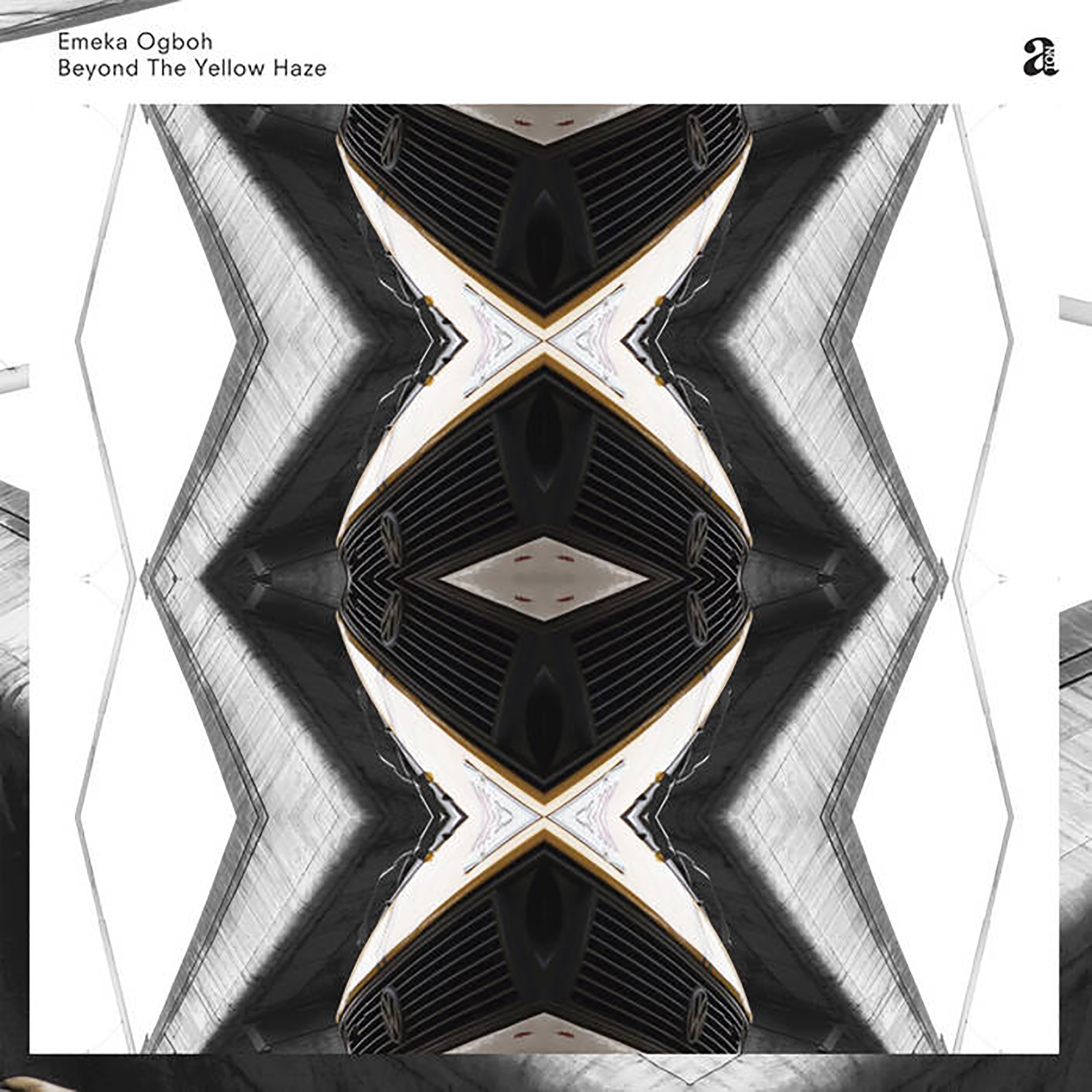 This bombshell release is the first album from Nigerian sound and installation artist Emeka Ogboh, but it sounds like the assured work of killer dub techno producer at the height of their powers. On its surface, Beyond The Yellow Haze admittedly (and probably unintentionally) shares a lot of common ground with prime Muslimgauze, as a central theme of Ogboh's art is his passion for capturing the ambient city sounds of Lagos. Consequently, these five pieces are nicely enhanced with layers of street noise, conversations, and passing snatches of melody, yet Beyond The Yellow Haze is primarily a great album because Ogboh is a goddamn wizard at crafting heavy, shape-shifting grooves with elegant dubwise percussion flourishes. I suppose the beats also creep into Muslimgauze territory at times, as Ogboh is similarly quite fond of slow and hypnotic grooves flavored with African and Arabic rhythms, yet the two artists differ dramatically when it comes to focus and exacting execution (among other things), as nearly every song here is a flawless diamond of immersively layered textures, slow-burning dynamic transformation, and crunching physicality. This is probably the strongest beat-driven album that I have heard all year, debut or otherwise.
This bombshell release is the first album from Nigerian sound and installation artist Emeka Ogboh, but it sounds like the assured work of killer dub techno producer at the height of their powers. On its surface, Beyond The Yellow Haze admittedly (and probably unintentionally) shares a lot of common ground with prime Muslimgauze, as a central theme of Ogboh's art is his passion for capturing the ambient city sounds of Lagos. Consequently, these five pieces are nicely enhanced with layers of street noise, conversations, and passing snatches of melody, yet Beyond The Yellow Haze is primarily a great album because Ogboh is a goddamn wizard at crafting heavy, shape-shifting grooves with elegant dubwise percussion flourishes. I suppose the beats also creep into Muslimgauze territory at times, as Ogboh is similarly quite fond of slow and hypnotic grooves flavored with African and Arabic rhythms, yet the two artists differ dramatically when it comes to focus and exacting execution (among other things), as nearly every song here is a flawless diamond of immersively layered textures, slow-burning dynamic transformation, and crunching physicality. This is probably the strongest beat-driven album that I have heard all year, debut or otherwise.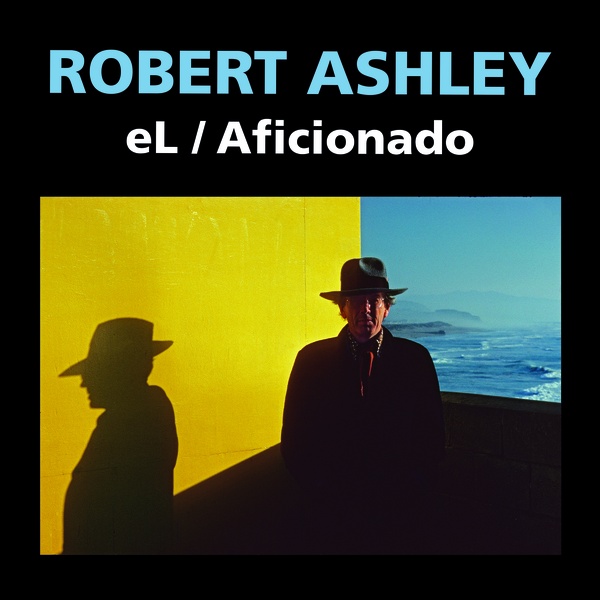 Robert Ashley’s enigmatic opera of interrogation was frequently performed between 1987 and 1993, and a previous recording was released on Lovely Music in 1994. The cast of a 2021 production in Roulette, Brooklyn, are featured on this new rendition, with Kayleigh Butcher, as The Agent, and Brian McCorkle, Bonnie Lander, Paul Pinto as Interrogators #1, 2, and 3. Above and beyond Ashley’s melodies, each participant singer is assigned their own distinct pitch around which they improvise vocal inflections to portray intent and meaning. eL/Aficionado displays the compelling depth of Ashley’s dazzlingly creativity, which is somewhere on a line leading from Edward Hopper and Samuel Beckett to Laurie Anderson and Len Jenkin.
Robert Ashley‚Äôs enigmatic opera of interrogation was frequently performed between 1987 and 1993, and a previous recording was released on Lovely Music in 1994. The cast of a 2021 production in Roulette, Brooklyn, are featured on this new rendition, with Kayleigh Butcher, as The Agent, and Brian McCorkle, Bonnie Lander, Paul Pinto as Interrogators #1, 2, and 3. Above and beyond Ashley‚Äôs melodies, each participant singer is assigned their own distinct pitch around which they improvise vocal inflections to portray intent and meaning. eL/Aficionado displays the compelling depth of Ashley‚Äôs dazzlingly creativity, which is somewhere on a line leading from Edward Hopper and Samuel Beckett to Laurie Anderson and Len Jenkin.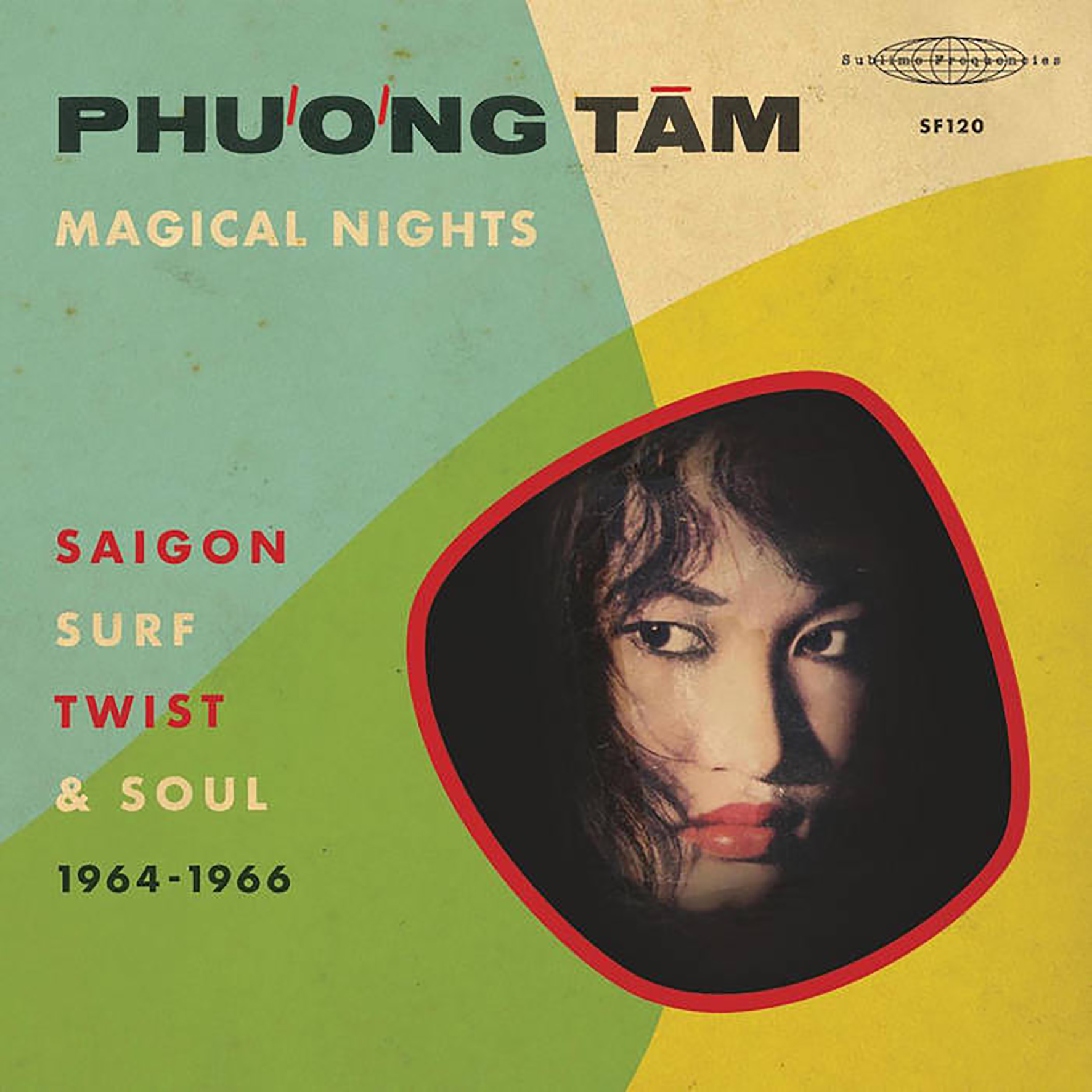 This collection, which I hereby deem an instant Sublime Frequencies classic, is devoted entirely to the long-unheard and elusive discography of one of the most magnetic singers of Saigon's "golden music" age. Part of the reason why Ph∆∞∆°ng T√¢m's work has languished in undeserved semi-obscurity is grimly predictable, as most of her music was destroyed during Vietnam's great purge of American-influenced culture in 1975, but T√¢m also abruptly ended her singing career in her prime to pursue forbidden love instead (an acceptably cool reason, I feel). According to her daughter Hannah H√†, Phương Tâm remained something of a highly localized karaoke supernova in the years since her stardom days, but H√† did not discover how truly famous her mom actually was until late 2019. One thing led to another and H√† found Mark Gergis after discovering his beloved Saigon Rock and Soul compilation. Gergis and a handful of like-minded crate-digging luminaries then set about tracking down as much of Ph∆∞∆°ng T√¢m's rare and often mistakenly attributed oeuvre as they could find, much of which even T√¢m herself had not heard since the recording sessions. While the journey to this album is undeniably a fascinating and heart-warming one, the best part is the songs themselves, as this album is a treasure trove of fun, soulful, and sexy genre-blurring gems from the golden age of swinging Saigon nightlife. Moreover, I was legitimately gobsmacked to learn that these songs were all recorded by the same person in such a brief span, as T√¢m channels everything from Brenda Lee to Ella Fitzgerald to the kind of impossibly cool, sexy, and ahead-of-their-time numbers that feel like would-be highlights from Lux Interior and Poison Ivy‚Äôs oft-anthologized record collection.
This collection, which I hereby deem an instant Sublime Frequencies classic, is devoted entirely to the long-unheard and elusive discography of one of the most magnetic singers of Saigon's "golden music" age. Part of the reason why Ph∆∞∆°ng T√¢m's work has languished in undeserved semi-obscurity is grimly predictable, as most of her music was destroyed during Vietnam's great purge of American-influenced culture in 1975, but T√¢m also abruptly ended her singing career in her prime to pursue forbidden love instead (an acceptably cool reason, I feel). According to her daughter Hannah H√†, Phương Tâm remained something of a highly localized karaoke supernova in the years since her stardom days, but H√† did not discover how truly famous her mom actually was until late 2019. One thing led to another and H√† found Mark Gergis after discovering his beloved Saigon Rock and Soul compilation. Gergis and a handful of like-minded crate-digging luminaries then set about tracking down as much of Ph∆∞∆°ng T√¢m's rare and often mistakenly attributed oeuvre as they could find, much of which even T√¢m herself had not heard since the recording sessions. While the journey to this album is undeniably a fascinating and heart-warming one, the best part is the songs themselves, as this album is a treasure trove of fun, soulful, and sexy genre-blurring gems from the golden age of swinging Saigon nightlife. Moreover, I was legitimately gobsmacked to learn that these songs were all recorded by the same person in such a brief span, as T√¢m channels everything from Brenda Lee to Ella Fitzgerald to the kind of impossibly cool, sexy, and ahead-of-their-time numbers that feel like would-be highlights from Lux Interior and Poison Ivy‚Äôs oft-anthologized record collection. This unique debut album is definitely one of the year's most pleasant surprises, as art/music journalist Kretowicz assembled a bevy of talented collaborators to craft a poignant and subtly hallucinatory tour de force of autofiction-based sound art. While some of the people involved (Mica Levi, Tirzah, etc.) certainly enhance the initial allure of I hate it here, it is a great challenge to focus on anything other than Kretowicz's sardonic, time-bending narrative as soon as she opens her mouth and things gets rolling. Thematically, the album is billed as a "psychedelic audio narrative" that "wanders through a layered and multi-dimensional notion of existence as suffering," which mostly feels apt, yet it fails to convey how truly charming and blackly funny wandering through that notion with Kretowicz can be. More importantly, this is the rare spoken word album that remains compelling beyond the first listen, as the combination of Kretowicz's deadpan, accented voice and the sound collage talents of felicita & Ben Babbitt make it an absorbing delight long after the meaning and impact of Kretowicz's words dissipate into more abstract and nuanced pleasures like texture and feeling. To my ears, this is one of the most inspired, immersive, and memorable albums of the year.
This unique debut album is definitely one of the year's most pleasant surprises, as art/music journalist Kretowicz assembled a bevy of talented collaborators to craft a poignant and subtly hallucinatory tour de force of autofiction-based sound art. While some of the people involved (Mica Levi, Tirzah, etc.) certainly enhance the initial allure of I hate it here, it is a great challenge to focus on anything other than Kretowicz's sardonic, time-bending narrative as soon as she opens her mouth and things gets rolling. Thematically, the album is billed as a "psychedelic audio narrative" that "wanders through a layered and multi-dimensional notion of existence as suffering," which mostly feels apt, yet it fails to convey how truly charming and blackly funny wandering through that notion with Kretowicz can be. More importantly, this is the rare spoken word album that remains compelling beyond the first listen, as the combination of Kretowicz's deadpan, accented voice and the sound collage talents of felicita & Ben Babbitt make it an absorbing delight long after the meaning and impact of Kretowicz's words dissipate into more abstract and nuanced pleasures like texture and feeling. To my ears, this is one of the most inspired, immersive, and memorable albums of the year. This is one of those rare collaborations in which I had absolutely no idea what kind of album to expect, as the only obvious common ground this duo shares is a strong interest in sound design, though it is probably safe to say they are both drawn to unusual projects too given their past involvement with Rắn Cạp ĐuôI Collective. Now that I have heard Myxomy, however, I am faced with the fresh challenge of describing a vision that is elusively shapeshifting, kaleidoscopic, and wrong-footing from start to finish. I suppose the most consistent aesthetic is something akin to "half-deconstructed/half-maximalist outsider R&B" or some similarly heretofore nonexistent genre, but the real theme seems to exclusively be one of endless mutation. In fact, the idea for the collaboration originally began with James Ginzburg sending Ziúr some beats from his early techno days, which triggered a dueling exchange of raw material reworkings that rapidly escalated and morphed until the "duo's fragmented sketches and scribbles took on new life" that "developed into anxious, hybridized pop jewels." To be fair, Myxomy is admittedly poppier than I ever would have anticipated, but this project is waaaaay too weird, fractured, and unpredictable to ever be mistaken for actual pop (jewels or otherwise). It mostly feels more like a handful of hooks wandering through a collapsed post-industrial landscape in search of a proper home. I am not sure any of them ever quite found one (seems doubtful), but some of these experiments are impressively visceral and unique in their own right (even if they can sometimes be a real challenge to digest).
This is one of those rare collaborations in which I had absolutely no idea what kind of album to expect, as the only obvious common ground this duo shares is a strong interest in sound design, though it is probably safe to say they are both drawn to unusual projects too given their past involvement with Rắn Cạp ĐuôI Collective. Now that I have heard Myxomy, however, I am faced with the fresh challenge of describing a vision that is elusively shapeshifting, kaleidoscopic, and wrong-footing from start to finish. I suppose the most consistent aesthetic is something akin to "half-deconstructed/half-maximalist outsider R&B" or some similarly heretofore nonexistent genre, but the real theme seems to exclusively be one of endless mutation. In fact, the idea for the collaboration originally began with James Ginzburg sending Ziúr some beats from his early techno days, which triggered a dueling exchange of raw material reworkings that rapidly escalated and morphed until the "duo's fragmented sketches and scribbles took on new life" that "developed into anxious, hybridized pop jewels." To be fair, Myxomy is admittedly poppier than I ever would have anticipated, but this project is waaaaay too weird, fractured, and unpredictable to ever be mistaken for actual pop (jewels or otherwise). It mostly feels more like a handful of hooks wandering through a collapsed post-industrial landscape in search of a proper home. I am not sure any of them ever quite found one (seems doubtful), but some of these experiments are impressively visceral and unique in their own right (even if they can sometimes be a real challenge to digest).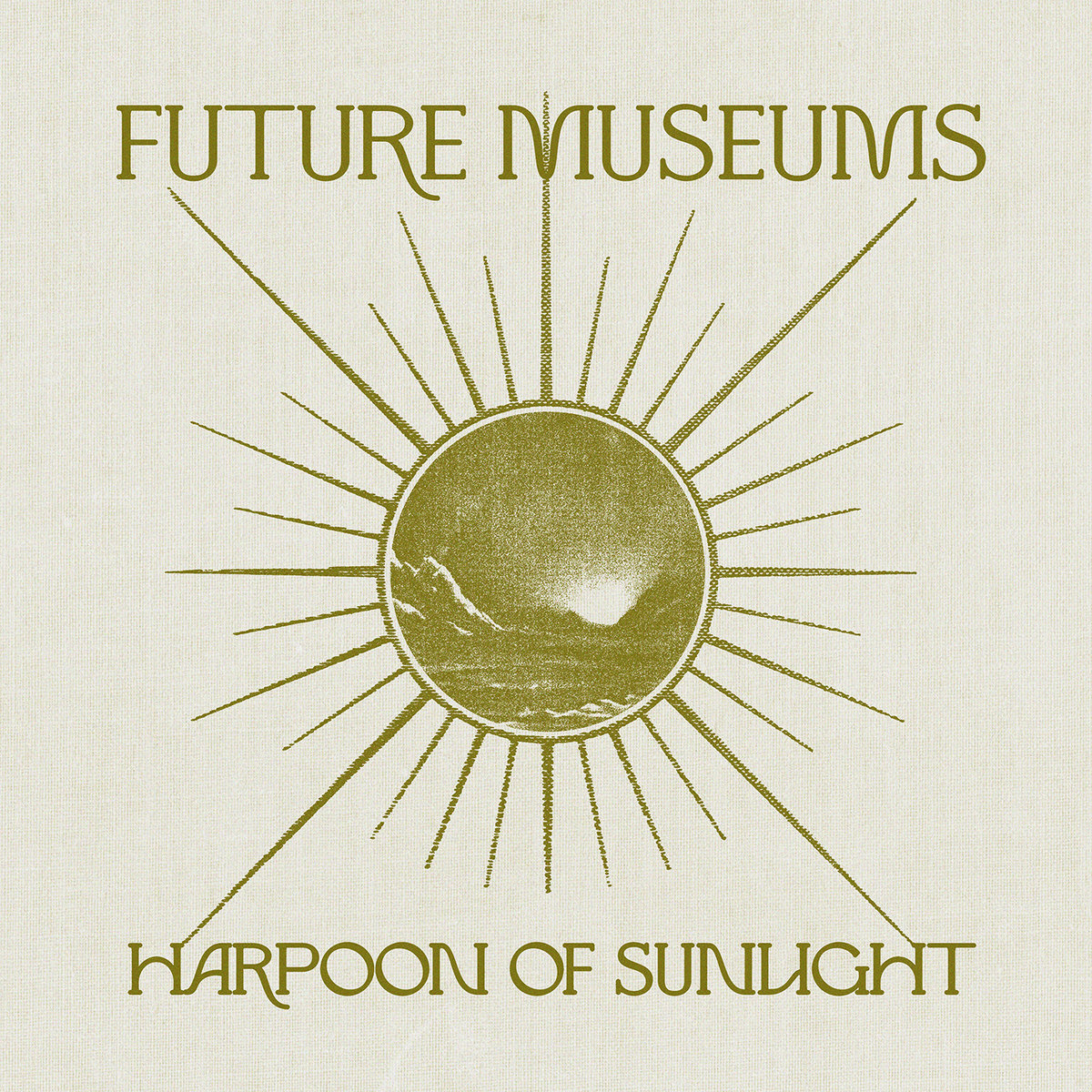 "Harpoon of Sunlight" sees Neil Lord's project Future Museums releasing on Austin label Aural Canyon, a label whose tagline reads "Deep listening for the new, now age." While Lord also releases on Holodeck, the switch is appropriate for his latest, a work initially conceived as "an hour and a half long album exercising patience and repetition," of which the most melodic portions were pressed to the first vinyl release for both the artist and label. Recorded in quarantine in 2020, the resulting album reflects the intense Texas summer heat, alternating between warming and traumatic, interrupted only by cooler evening breezes that serve as a reprieve. Inventive percussive sounds are delicately strewn through atmospheric synths and motorik rhythms, providing a balance between hard and soft, and hot to cool, serving as an aural respite for the challenges of the past couple of years.
"Harpoon of Sunlight" sees Neil Lord's project Future Museums releasing on Austin label Aural Canyon, a label whose tagline reads "Deep listening for the new, now age." While Lord also releases on Holodeck, the switch is appropriate for his latest, a work initially conceived as "an hour and a half long album exercising patience and repetition," of which the most melodic portions were pressed to the first vinyl release for both the artist and label. Recorded in quarantine in 2020, the resulting album reflects the intense Texas summer heat, alternating between warming and traumatic, interrupted only by cooler evening breezes that serve as a reprieve. Inventive percussive sounds are delicately strewn through atmospheric synths and motorik rhythms, providing a balance between hard and soft, and hot to cool, serving as an aural respite for the challenges of the past couple of years.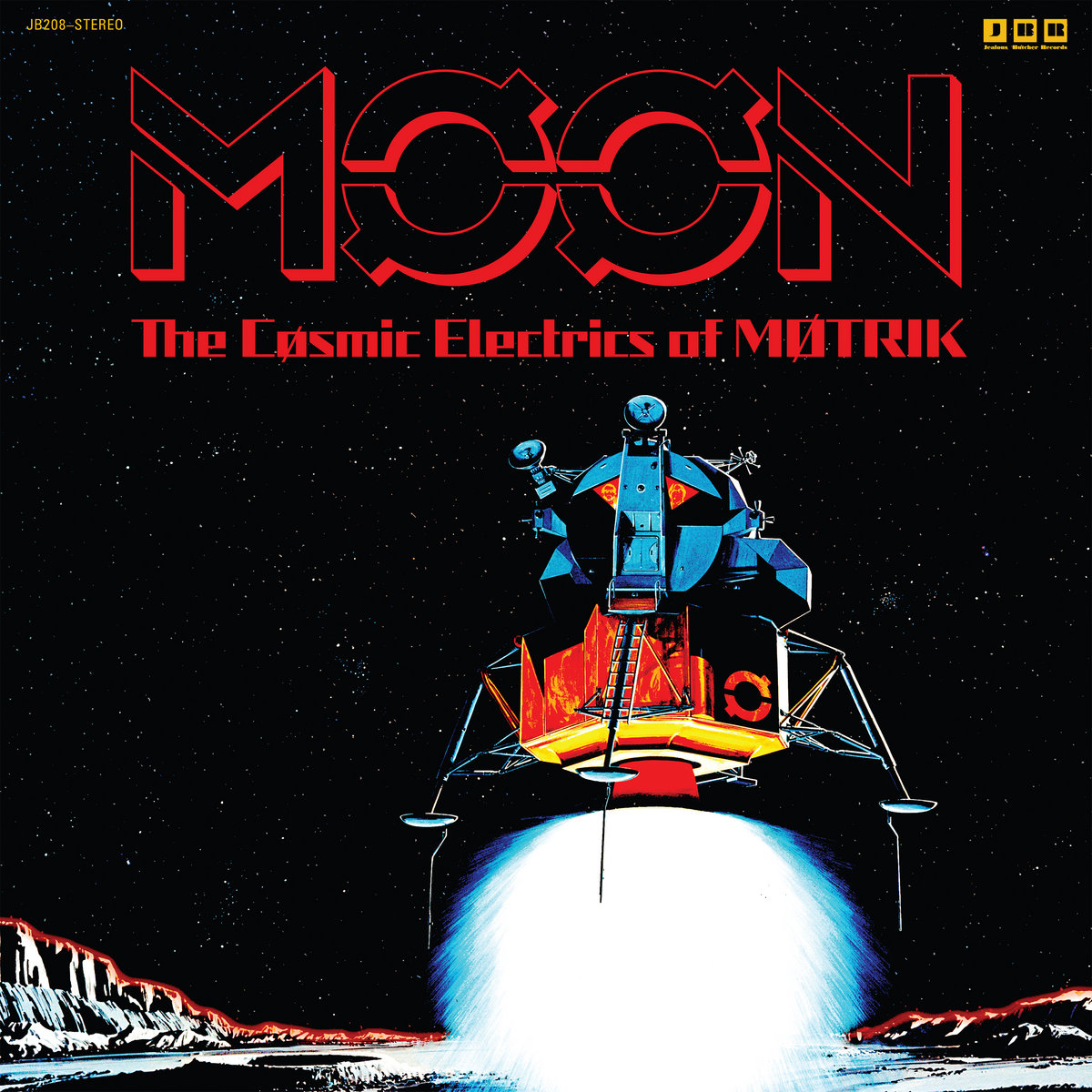 The latest from Portland, Oregon's appropriately named M√∏trik consumed me in seconds, dragging my earholes down into a kosmische pool before spitting me into outer space. Thankfully, it was a pleasantly symbiotic relationship for me, a journey I enjoyed taking into M√ò√òN: The Cosmic Electrics of M√òTRIK. While M√∏trik may not yet stand alongside their elders in the history books, each of its practiced members form a tight rhythm section of bass and drums, knowing exactly when to lay on the space by way of thick layers of distortion and when to visit more ethereal territory.
The latest from Portland, Oregon's appropriately named M√∏trik consumed me in seconds, dragging my earholes down into a kosmische pool before spitting me into outer space. Thankfully, it was a pleasantly symbiotic relationship for me, a journey I enjoyed taking into M√ò√òN: The Cosmic Electrics of M√òTRIK. While M√∏trik may not yet stand alongside their elders in the history books, each of its practiced members form a tight rhythm section of bass and drums, knowing exactly when to lay on the space by way of thick layers of distortion and when to visit more ethereal territory. Montreal's Yoo Doo Right, aptly named after a very early Can track, are absolutely about that vibe; one doesn't need to be a keen listener to catch that early on. However, the band's debut album is not a duplicate of any single kosmische entity but rather a blend of each best. They have been doing their homework, revealing a deep respect for the genre. Their debut "Don't Think You Can Escape Your Purpose" provides some of the best modern space rock released this year, filled with motorik rhythms and atmospheric guitars backed by solid bass lines. The music feels free enough to go off on tangents but always comes back around, fluidly alternating from dreamy fuzz to delicate ambiance before rocking out motorik-style.
Montreal's Yoo Doo Right, aptly named after a very early Can track, are absolutely about that vibe; one doesn't need to be a keen listener to catch that early on. However, the band's debut album is not a duplicate of any single kosmische entity but rather a blend of each best. They have been doing their homework, revealing a deep respect for the genre. Their debut "Don't Think You Can Escape Your Purpose" provides some of the best modern space rock released this year, filled with motorik rhythms and atmospheric guitars backed by solid bass lines. The music feels free enough to go off on tangents but always comes back around, fluidly alternating from dreamy fuzz to delicate ambiance before rocking out motorik-style.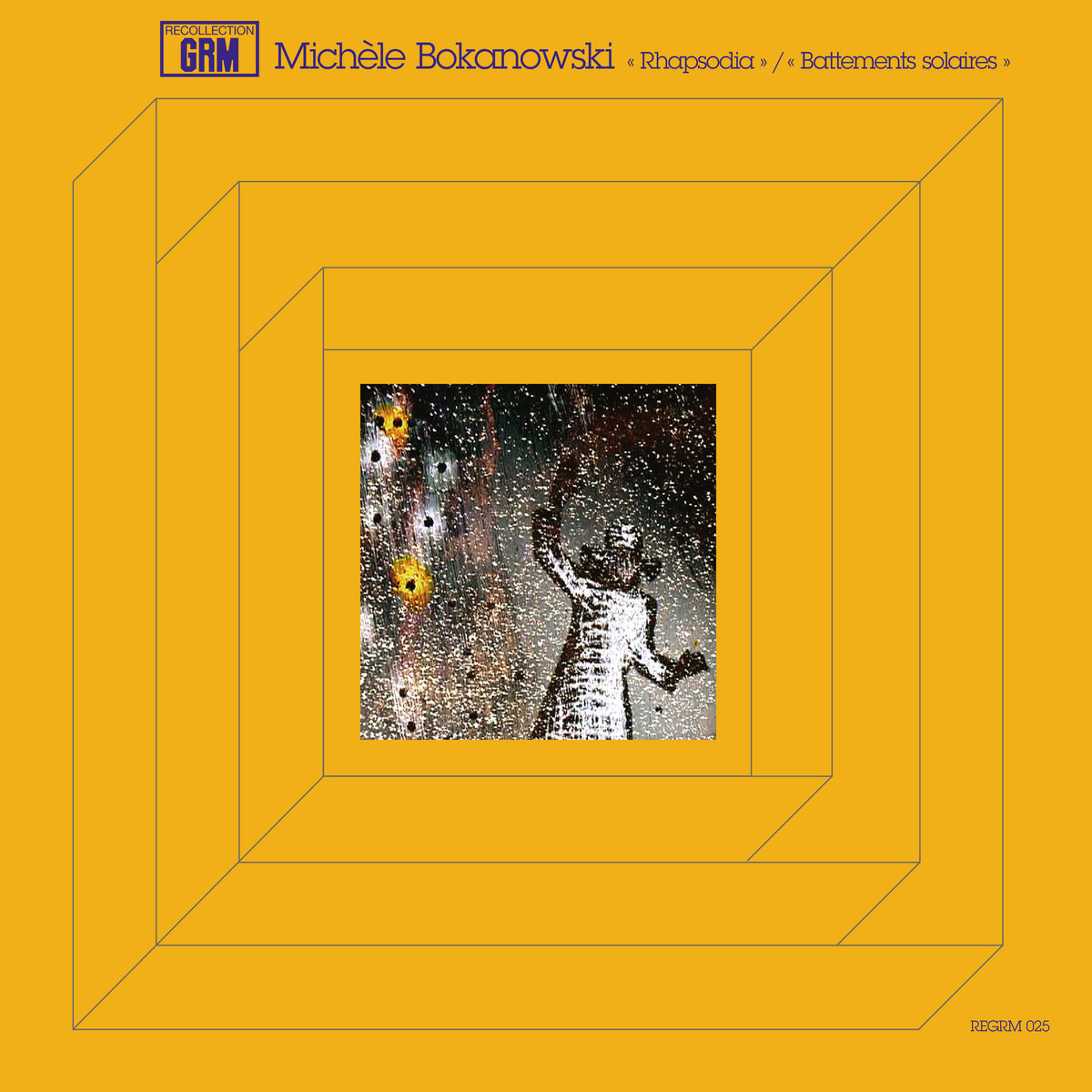 This electro-acoustic release by Michèle Bokanowki consists of two pieces. "Rhapsodia" from 2018, is a stunning work in two movements with a short interlude, dedicated to choreographer, Marceline Lartigue. "Rhapsodia" is as close to perfection as I can imagine music to ever be, with the texture, the pace, the changes, and the timing of the changes all working in an organic and unhurried way. "Battlement solaires" from a decade earlier, is the soundtrack to Patrick Bokanowski’s film of that name. Initially I felt this second piece might be best heard with visual images, but by the third hearing I utterly love it as a stand alone work, too.
This electro-acoustic release by Michèle Bokanowki consists of two pieces. "Rhapsodia" from 2018, is a stunning work in two movements with a short interlude, dedicated to choreographer, Marceline Lartigue. "Rhapsodia" is as close to perfection as I can imagine music to ever be, with the texture, the pace, the changes, and the timing of the changes all working in an organic and unhurried way. "Battlement solaires" from a decade earlier, is the soundtrack to Patrick Bokanowski’s film of that name. Initially I felt this second piece might be best heard with visual images, but by the third hearing I utterly love it as a stand alone work, too.
